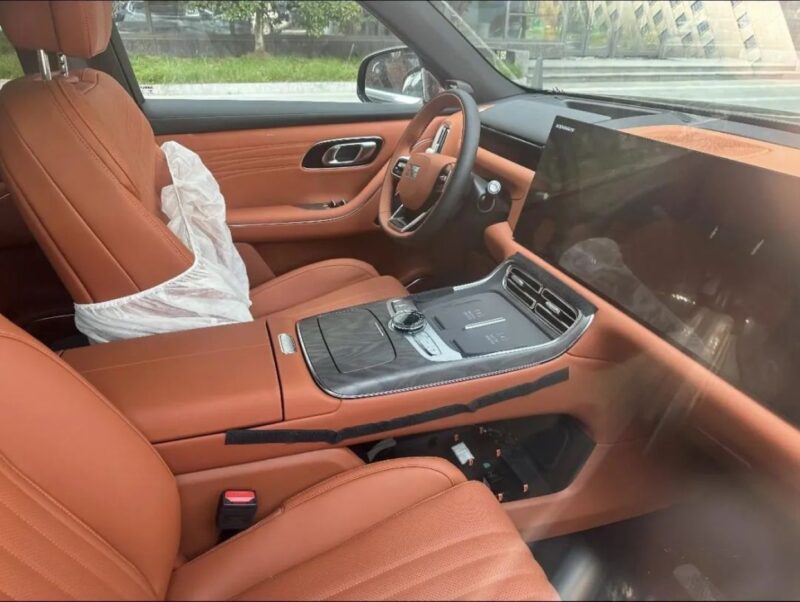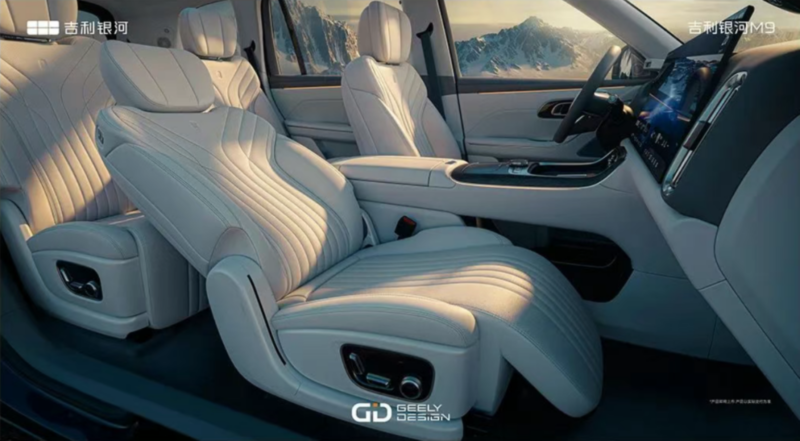Galaxy M9 spotted: Geely’s 6-seater SUV boasts 1500 km range
Geely’s upcoming large SUV, the Galaxy M9, has been spotted on public roads before its official launch, revealing much of its design and feature set. Positioned to compete with models like the Aito M9, Li Auto L9, and Lynk & Co 900, the Galaxy M9 will launch in China in Q3 2025 and is expected to be priced between 200,000 to 300,000 yuan (approx. 28,000 to 42,000 USD).

The SUV stretches 5 meters long and adopts a squared-off silhouette with a closed-off front fascia. Its lighting design features matrix-style LED headlamps connected by a full-width light bar, accented with Geely’s signature “Galaxy ripple” motif. A roof-mounted Lidar unit supports the Qianli Haohan H5 intelligent driving system, which enables door-to-door navigation-assisted driving. Chrome detailing around the windows, side skirts, and front bumper adds a touch of luxury, complemented by large multi-spoke alloy wheels.
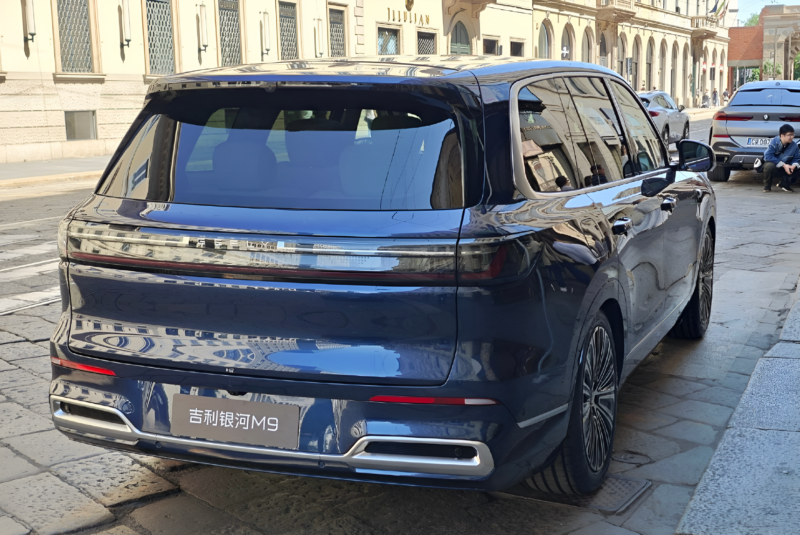
At the rear, the M9 adopts a wide stance with a full-width “rising sun” taillight featuring ripple-style lighting effects. Twin faux exhaust outlets and a large circular spoiler highlight its sporty character. The SUV will be available in several exterior colours, including blue, grey, black, and deep green.
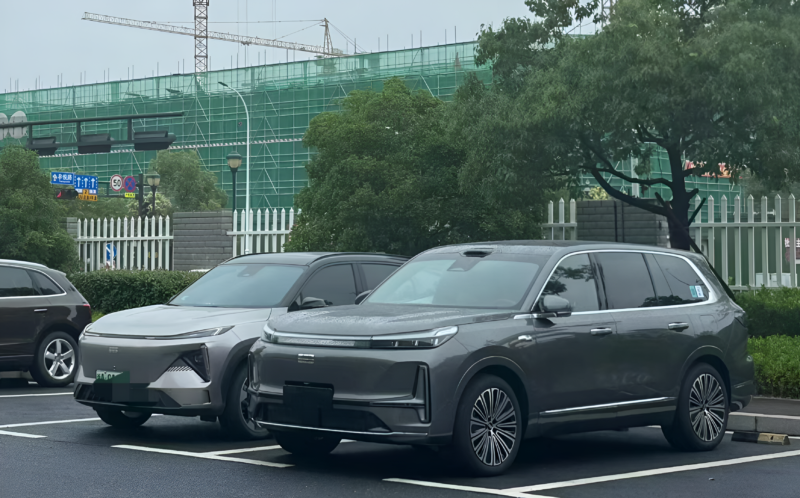
Inside, the M9 uses a 2+2+2 seating configuration. It features a dual integrated screen layout—one for infotainment and one for the front passenger—alongside a digital instrument panel and head-up display. The cabin offers white and orange colour options with wood-grain accents, ambient lighting, and premium features like an electronic column shifter and dual 50W wireless phone chargers.

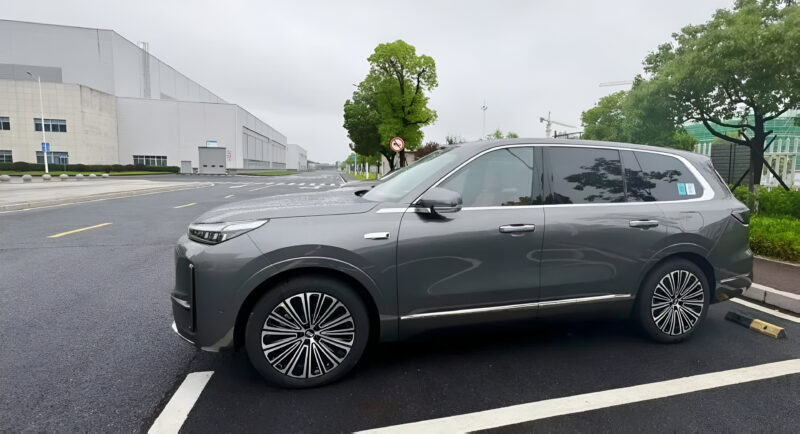
The first and second-row seats have massage, heating, and ventilation functions. The second-row zero-gravity seats include fold-out tables and a ceiling-mounted entertainment screen, while the third row features a wide 180 mm aisle and 150° electric seatback adjustment. Additional amenities include a car refrigerator and double sunroofs.
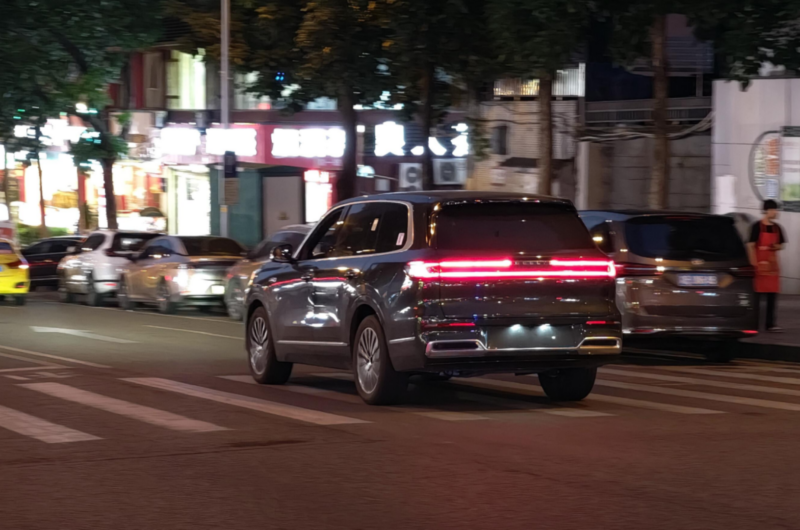

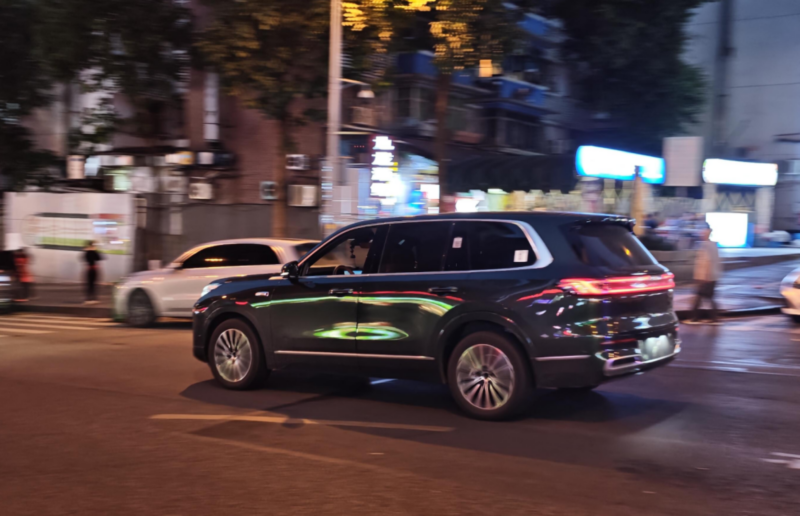
Powering the M9 is Geely’s Thor EM-P super hybrid system with three electric motors, delivering 0–100 km/h acceleration in 4.5 seconds. The system supports over 1500 km of CLTC range, with fuel consumption rated at 4.8L/100 km in charge-depleted mode. The SUV also benefits from an AI digital chassis featuring dual-chamber closed-air suspension, in-wheel motors, and a comprehensive vehicle dynamics control system (GVMC) for improved ride and handling.
